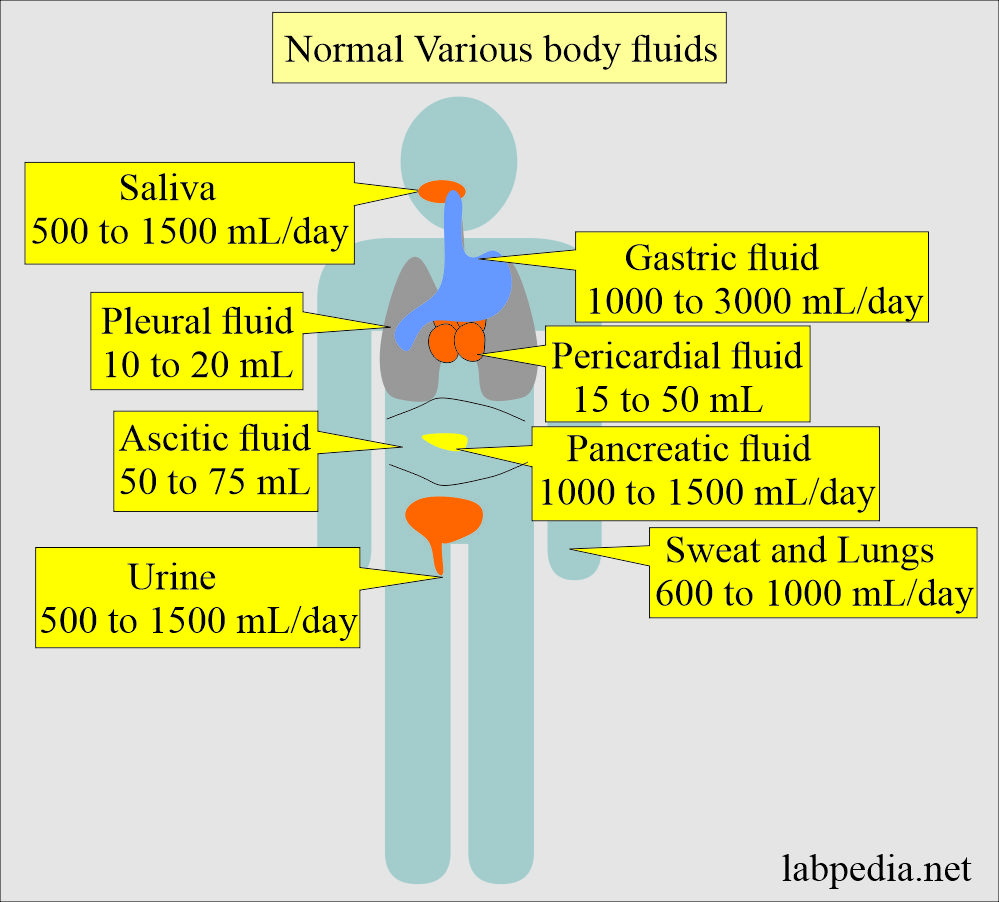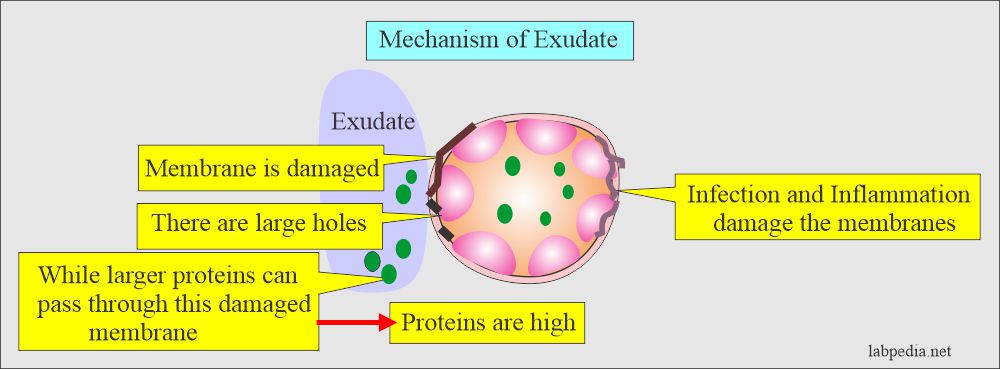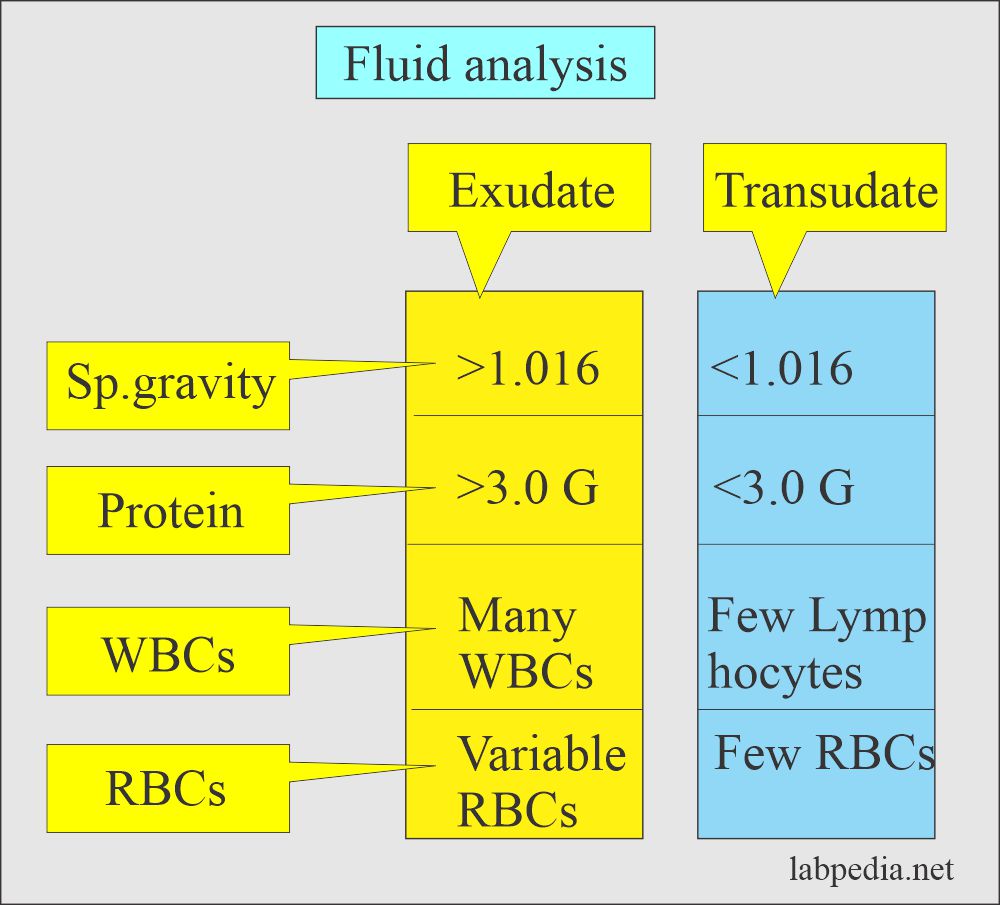Fluid Analysis:- Part 1 – Body Fluids and Their Importance, Transudate and Exudate
Fluid Analysis
How will you define Fluids in various cavities of the body?
- The fluid is secreted by the serous membranes lining the peritoneum, pleural and pericardial cavities.
- Literally, serous fluid means resembling serum.
What is the importance of fluid in the various cavities?
- This serous fluid is found in the pleural, peritoneal, and pericardial cavities, which will lubricate the opposing parietal and visceral membrane surfaces.
- Inflammation or infection affecting the cavities causes fluid to accumulate.
- Serous fluid is the ultrafiltrate of the plasma.
- The fluid formation depends upon the following:
- Hydrostatic pressure.
- Capillaries permeability.
- Colloid osmotic pressure.
- Lymphatic drainage.
What are the types of body fluid and their normal quantity?
- The pericardial cavity around the heart contains the fluid, and the aspiration of the pericardial fluid is called pericardiocentesis.
- Normal pericardial fluid is 15 to 50 mL.
- Peritoneal or ascitic fluid is found in the abdomen. This is the effusion and accumulation of serous fluid in the abdominal cavity. Its aspiration is called paracentesis.
- Normal peritoneal fluid is 50 to 75 mL.
- Pleural cavity fluid was found in the chest. Aspiration is called thoracentesis.
- Normal pleural fluid is 10 to 20 mL.
- Gastric fluid is 1000 to 3000 mL/day.
- Bile is 300 to 1000 mL/day.
- Saliva is 500 to 1500 mL/day.
- Pancreatic fluid is 1000 to 1500 mL/day.
- Small intestinal fluid is 1000 to 2000 mL/day.
- Urine output is 500 to 1500 mL/day.
- Insensible loss through skin and lungs is 600 to 1000 mL/day.
What are Normal Various body fluids and their quantities?
| Fluid site | Quantity Produced |
|
|
|
|
|
|
|
|
|
|
|
|
|
|
|
|
|
|
|
|
|
|
What are the normal findings of serous fluids?
| Parameters | Characteristic features |
|
|
|
|
|
|
|
|
|
|
|
|
|
|
What are the normal Ascitic fluid findings?
| Parameters | Characteristic features |
|
|
|
|
|
|
|
|
|
|
|
|
|
|
|
|
|
|
|
|
|
|
Transudate
What are the characteristic features of Transudate?
What is the mechanism of transudate formation?
- It is the fluid that accumulates as ultrafiltrate and is called Transudate.
- The capillary pore can allow the passing of the protein of mol. Weight of 200,000 to 300,000 daltons.
- The larger molecular weight proteins are held back and can not cross the basement membranes.
- Transudate accumulates because of the increased hydrostatic pressure in the capillaries.
- The fluid is low in protein as compared to plasma.
What are the features of Transudate?
| Parameters | Values |
|
|
|
|
|
|
|
|
|
|
Exudate
What are the characteristic features of Exudate?
What is the mechanism of exudate formation?
- Fluid accumulates because of the injury to the membranes due to infection or inflammation.
- The damaged membranes allow passing through the larger molecules of proteins.
What are the features of Exudate?
| Parameters | Values/Findings |
|
|
|
|
|
|
|
|
|
|
What are the types of exudates?
- Serous.
- Fibrinous.
- Serofibrinous.
- Purulent.
- Putrid.
- Chylous.
- Serosanguinopurulent.
How will you Differentiate between Transudate and Exudate?
| Parameter | Transudate | Exudate |
|
|
|
|
|
|
|
|
|
|
|
|
|
|
|
|
|
|
|
|
|
|
|
|
|
|
|
|
|
|
|
|
|
|
|
|
|
|
|
|
|
|
|
|
|
Questions and answers:
Question 1: What is protein level in transudate?
Question 2: What is the cell count in the exudate?





we have problem in large in our hospital there is no common job aid for analysis body fluid . would have job aids for routine analysis body fluids
You can follow labpedia.net.